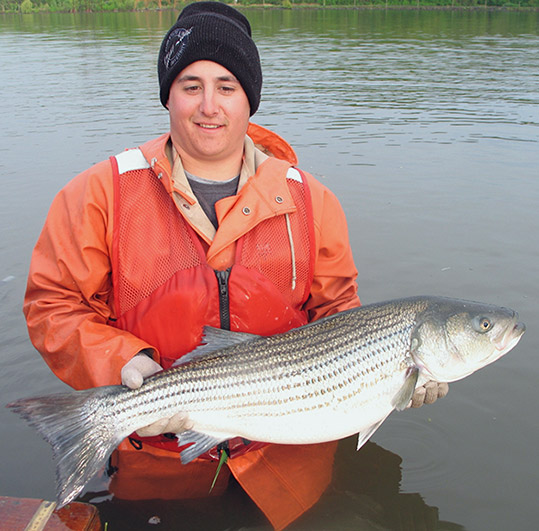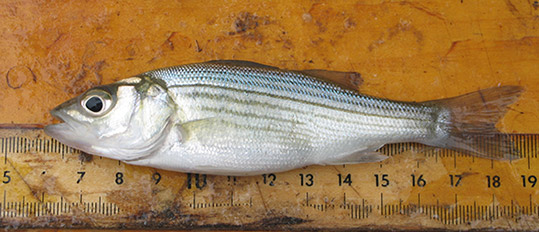Striped Bass
The striped bass is one of our most important game and food fishes. Most Hudson River stripers are anadromous, hatching in freshwater reaches of the river and spending two winters in the estuary before leaving to travel along the coast. They return to the Hudson to spawn when four to seven years old. Stripers may live as long as eighteen years, reaching weights up to seventy-five pounds and lengths up to fifty-five inches. The largest specimens are females.
Commercial fishing for striped bass is restricted in the Hudson due to contamination by toxic poly-chlorinated biphenyls (PCBs). The commercial fishery has been closed since 1976. Sport anglers are allowed to keep only one fish per day, and the state health department recommends limiting or avoiding consumption of stripers.
Because the Hudson produces a large percentage of the East Coast’s striper population, environmentalists and fishing groups have worked hard to protect habitats important to this species here. Plans for a huge power plant at Storm King Mountain and for a superhighway along Manhattan’s West Side were called off in part because of the damage these projects might have caused to the fish and its habitat.

Young striped bass and young white perch are easy to confuse. The dorsal fins of the striped bass are completely separate, while the two dorsal fins of the white perch are just slightly joined.


